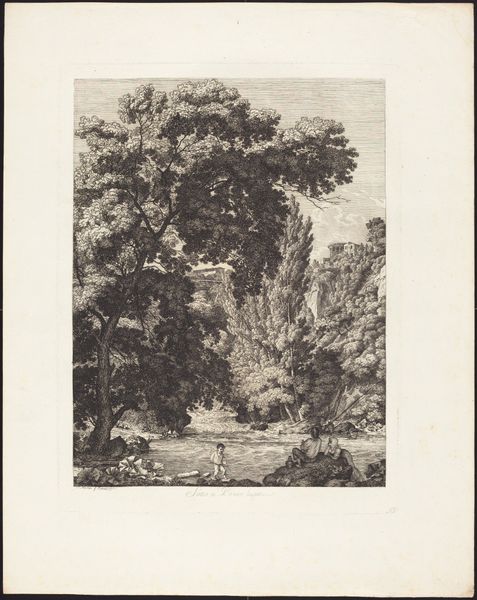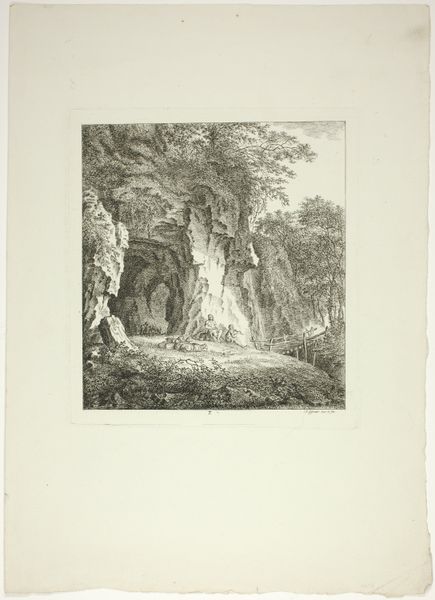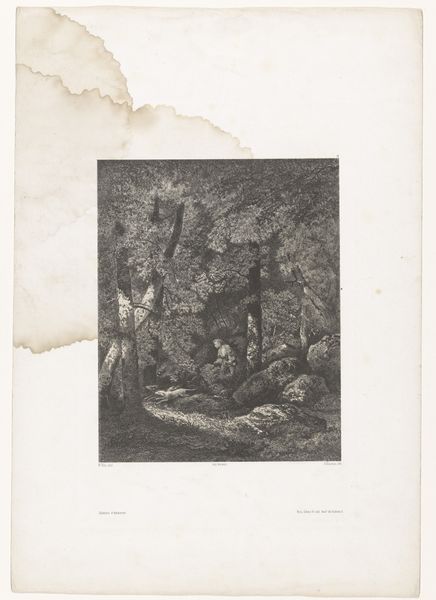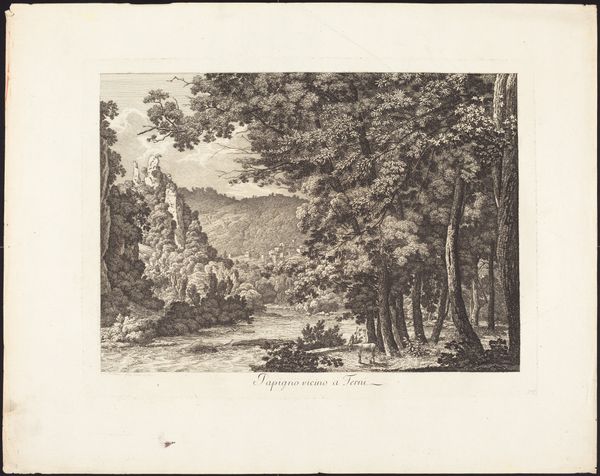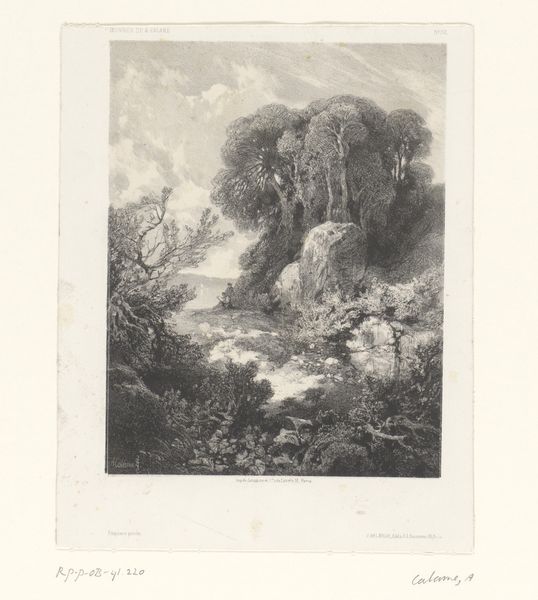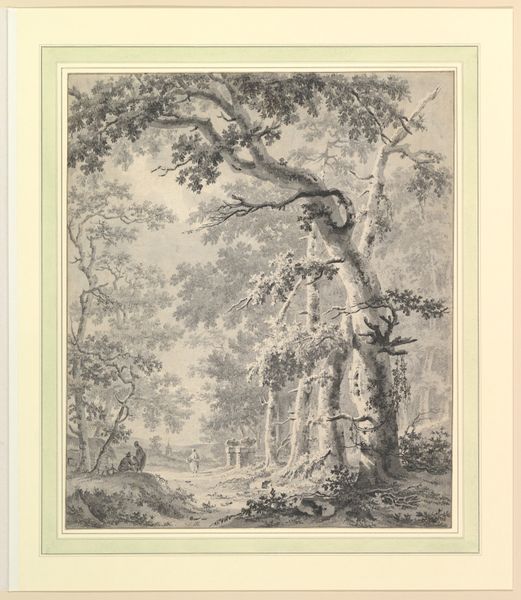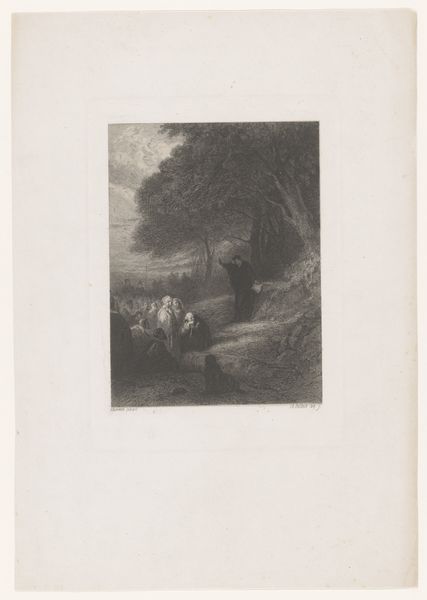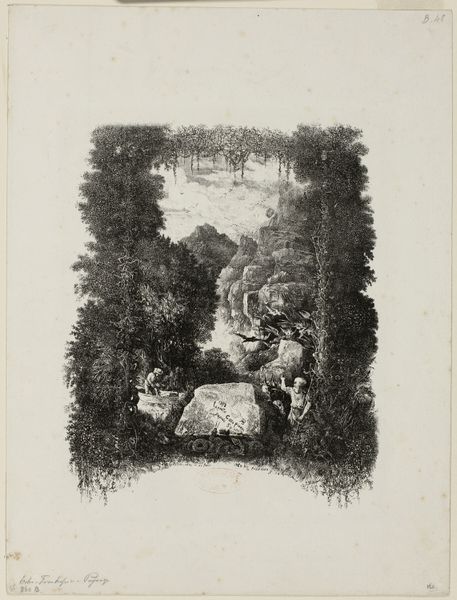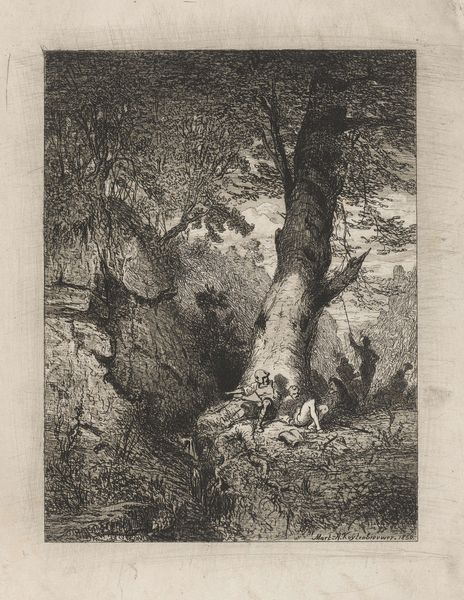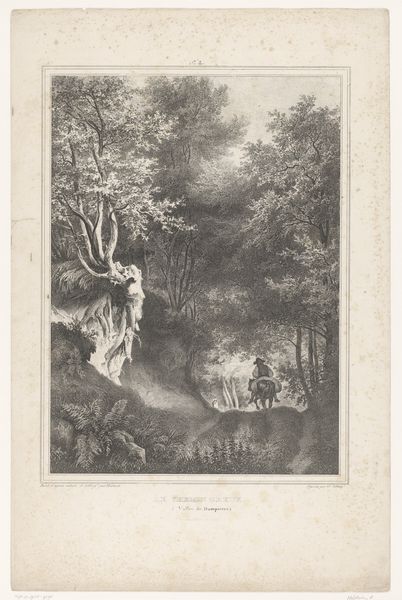
#
neoclacissism
# print
#
landscape
Dimensions: plate: 37.2 x 27.6 cm (14 5/8 x 10 7/8 in.) sheet: 49 x 39.2 cm (19 5/16 x 15 7/16 in.)
Copyright: National Gallery of Art: CC0 1.0
Curator: Look at the stark contrast in this print, "Ponte Lupo a Tivoli," crafted by Albert Christoph Dies in 1792. Editor: It's captivating! There’s a real sense of depth. Almost brooding, with those towering rocks framing a more tranquil scene in the distance. Curator: Absolutely. Dies, situated within the Neoclassical movement, showcases a vision of nature that isn’t merely picturesque. He lived and worked in Italy for quite a while, where the powerful legacy of the antique past resonated with his contemporaries. There's a calculated drama, isn’t there? It’s not just about documenting a place, but presenting it in a certain light, shaped, I think, by those cultural expectations. Editor: Yes, I completely agree. The way Dies composes the scene makes me think about class and societal positioning, as well as who has the access and time for travel in this pre-photographic moment. The figures at the lower right of the picture appear small and dark against the grandiose natural formations, dwarfed, perhaps emphasizing a perceived relationship between humankind and nature. Curator: The inclusion of figures grounds the image but also asks, who is entitled to claim such magnificent spaces as aesthetic and, by extension, economic or political property? Moreover, representations of landscapes often naturalize specific systems of governance and, consequently, oppression, don't you think? Editor: Absolutely. Think about how landscape paintings functioned for landowners during that period. Ownership of land equals power. Who commissions or purchases a print like this? For whom and why were these vistas reproduced and consumed? Curator: "Ponte Lupo a Tivoli," far from being an innocent landscape, embodies the power dynamics and cultural assumptions inherent in representing nature during the Neoclassical period. It's really amazing how something can simultaneously invite you to reflect upon beauty while instigating self-critique. Editor: It's such an important point that aesthetic beauty, in itself, does not guarantee neutrality. I will definitely be looking at Dies’ piece and other Neoclassical prints with more critical eyes.
Comments
No comments
Be the first to comment and join the conversation on the ultimate creative platform.
